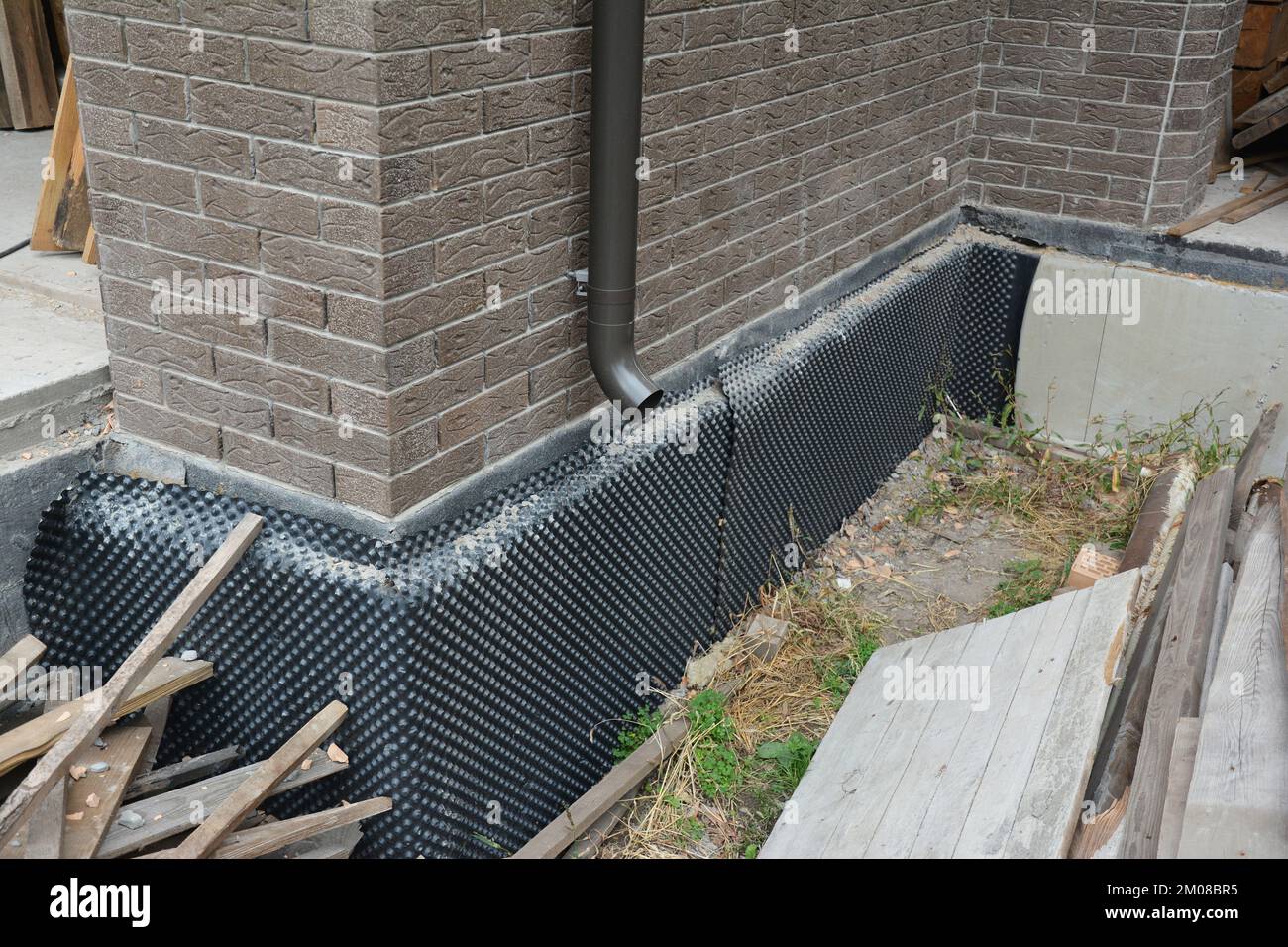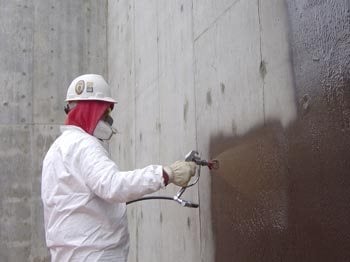Could your home be at risk? Use this guide from damp specialist newcastle to find out
Discovering the Various Strategies and Solutions for Effective Damp Proofing
Dampness in structures poses significant challenges to both architectural honesty and indoor air high quality. Various techniques and options have actually arised to combat this prevalent issue. From traditional damp-proof membranes to ingenious chemical treatments, each technique offers distinct advantages. Comprehending these alternatives is essential for effective wetness control. Choosing the ideal solution depends on details building conditions and demands, triggering more exploration into the most reliable damp proofing techniques offered.
Recognizing the Causes of Dampness
Dampness can arise from various resources, understanding these reasons is vital for reliable remediation. Typically, dampness originates from three main resources: increasing damp, permeating damp, and condensation. Rising moist occurs when groundwater takes a trip up via permeable products, such as block or rock, commonly as a result of a lack of an effective obstacle (damp specialist newcastle). Penetrating damp is normally brought on by outside elements, including roof covering leakages, defective seamless gutters, or damaged walls, enabling water to penetrate a property. Condensation, on the other hand, arises from excess wetness airborne, usually worsened by bad air flow and temperature distinctions, leading to water beads forming on surface areas. Determining these underlying concerns is necessary, as each type of moisture requires a customized technique for removal. Appropriate evaluation assists in figuring out the most effective remedies, eventually protecting the structural honesty of a building and improving interior air quality
Typical Damp-Proof Membrane Layers

Chemical Damp-Proofing Solutions
Chemical damp-proofing solutions supply an innovative approach to stopping wetness intrusion in structures. These methods typically include the application of liquid chemicals that penetrate masonry and form a barrier against increasing moist. Generally used chemicals consist of silanes, siloxanes, and various other water-repellent agents that respond with surface area products to produce a hydrophobic layer.The application procedure generally requires drilling holes into the walls, injecting the chemical solution, and allowing it to heal. This technique is specifically helpful for older frameworks where standard damp-proof membrane layers might be impractical. Chemical damp-proofing can be less disruptive and a lot more affordable than comprehensive remodelling projects.While effective, these options depend on correct application and ecological problems for peak efficiency. damp proofing newcastle. Normal upkeep and monitoring are important to ensure the long life of the damp-proofing treatment. In general, chemical damp-proofing represents a functional choice for safeguarding structures versus moisture-related damages
Tooth Cavity Wall Surface Construction Strategies
Tooth cavity wall surface building and construction strategies use numerous benefits, particularly in moisture control and energy performance. By including an air gap in between 2 layers of masonry, these wall surfaces successfully minimize water access while improving insulation. This mix not just shields frameworks from wetness but additionally adds to minimized energy intake.
Advantages of Dental Caries Wall Surfaces
When thinking about effective wet proofing techniques, the advantages of cavity wall surfaces attract attention plainly. Tooth cavity walls are composed of two different layers, creating an air gap that efficiently reduces wetness penetration. This layout reduces the danger of wetness, as the external wall surface functions as a barrier versus rainfall and water access. Additionally, dental caries wall surfaces boost thermal insulation, which adds to power performance by minimizing warm loss. They likewise provide sound insulation, aiding to produce a quieter interior environment. Moreover, the air gap permits air flow, which assists in dampness control and lowers the chance of mold development. These advantages not just enhance the total comfort of a building however additionally contribute to its long life and architectural stability.
Dampness Control Methods
Reliable wetness control approaches are critical in cavity wall surface building to ensure long-term security versus wetness. One key method entails the unification of weep holes, which assist in water drainage from the tooth cavity, preventing accumulation. Additionally, using breathable membranes can assist handle dampness degrees while enabling trapped vapor to get away. Proper positioning of insulation is likewise crucial, as it needs to not obstruct drain courses. Ensuring that the external leaves of the tooth cavity wall surface are created with waterproof products boosts overall sturdiness. Normal maintenance checks are vital to identify any obstructions or damages early, protecting the structure's integrity. Ultimately, a mix of these methods forms a durable defense against dampness invasion in tooth cavity walls.
Insulation and Energy Efficiency
Insulation plays an important function in enhancing energy effectiveness within tooth cavity wall surface building and construction. By incorporating insulating products, these walls produce a thermal barrier that reduces warmth loss and minimizes energy consumption. Effective insulation not just aids preserve a steady interior temperature but additionally mitigates the threat of moisture, as it stops condensation within the wall surface cavity. Various methods, such as making use of stiff foam boards or mineral woollen, can be used to achieve ideal insulation efficiency. Additionally, proper installment is important to ensure that spaces and voids are decreased, which can or else compromise power performance. Eventually, a well-insulated tooth cavity wall adds considerably to overall sustainability and decreases cooling and heating costs for property owners.
Exterior Damp Proofing Approaches
External moist proofing approaches are essential for safeguarding frameworks from wetness infiltration. 2 effective strategies include the application of water-proof membranes and the installation of French drains. These options help reduce water build-up and protect the honesty of buildings.
Waterproof Membrane Layer Application
While different approaches exist for preventing wetness ingress, the application of water resistant membrane layers remains a highly effective external damp proofing method. These membrane layers are typically made from materials such as polyethylene, rubber, or changed asphalt, providing a robust barrier against water infiltration. The setup procedure involves applying the membrane layer to the external surface areas of wall surfaces or structures, making sure total coverage to stop leakages. Correct attachment and securing at joints are critical to making the most of performance. Water resistant membranes can be applied in numerous forms, consisting of liquid finishings and sheet membranes, enabling flexibility based on the details requirements of the framework. This technique not only secures buildings from wetness yet additionally enhances their longevity and structural stability.
French Drainpipe Setup
One reliable technique for managing groundwater and avoiding moisture buildup around a structure's foundation is the installment of a French drainpipe. This water drainage system consists of a trench loaded with crushed rock and a perforated pipeline that reroutes surface water far from the foundation. Appropriate installment calls for careful preparation, ensuring that the drain slopes far from the structure to help with suitable water flow. Additionally, the location of the drainpipe is essential; it must be placed in areas prone to pooling or excess moisture. Normal maintenance, consisting of clearing up particles from the gravel and making sure the pipeline stays unblocked, is necessary for long-term effectiveness. Inevitably, a well-installed French drain can greatly minimize the danger of water-related concerns in structures and cellars.
Interior Waterproofing Strategies
Interior waterproofing methods are crucial for shielding a structure's interior from moisture infiltration and prospective water damage. These techniques generally include the application of customized materials and methods designed to develop a dampness barrier within the structure. One typical approach is the usage of waterproof coatings or sealers on wall surfaces and floors, which protect against wetness from permeating surfaces.Additionally, setting up indoor drainage systems, such as sump pumps, can efficiently manage water accumulation in basements and crawl areas. An additional technique entails making use of vapor barriers, which are mounted to hinder dampness motion from the ground right into living spaces.Moreover, dealing with any type of cracks or gaps in wall surfaces or foundations with website appropriate sealers ensures a detailed protection against water intrusion. By carrying out these indoor waterproofing techniques, residential or commercial property owners can significantly decrease the danger of mold and mildew growth, architectural damages, and various other moisture-related concerns. Correct execution of these techniques is essential for long-lasting defense and structure honesty.
Regular Maintenance and Assessment Practices
Normal upkeep and examination methods are crucial for ensuring the long-lasting effectiveness of damp proofing remedies in any structure. Routine checks enable homeowner to recognize early signs of moisture breach, such as peeling off paint, mold and mildew development, and musty smells. These indications can signal underlying problems that need prompt attention.Inspections should be performed at the very least annually, concentrating on prone areas like cellars, creep rooms, and outside wall surfaces. During these evaluations, building owners must examine sealants, drainage systems, and air flow to verify they function correctly.Additionally, keeping gutters and downspouts is important, as blocked systems can result in water accumulation near the structure. Carrying out a routine upkeep timetable, in addition to prompt repair services, can significantly prolong the life-span of wet proofing measures and secure the architectural honesty of the building. Aggressive steps ultimately contribute to the overall wellness and security of the living atmosphere.
Regularly Asked Questions
How Lengthy Does Damp Proofing Usually Last?
The duration of damp proofing efficiency varies, generally lasting in between 20 to half a century. Aspects such as application top quality, environmental conditions, and maintenance methods greatly affect the long life of the damp proofing treatment.

Can I Damp Proof My Home Myself?
The specific pondered the expediency of DIY damp proofing. With appropriate research and the best products, it is feasible. Nonetheless, they additionally recognized the relevance of specialist support to guarantee durable efficiency and prevent future concerns.
What Are the Signs of Inadequate Damp Proofing?
Indications of inefficient moist proofing consist of consistent mildewy smells, visible mold and mildew development, peeling paint, damp spots on wall surfaces, and wood decay - mould removal newcastle. Homeowners must attend to these issues promptly to stop further damage and health worries
Does Damp Proofing Affect Indoor Air Quality?

Just How Much Does Specialist Damp Proofing Expense?
Specialist moist proofing expenses vary substantially, normally varying from $1,000 to $5,000 depending on the property's size, the level of the damp problem, and chosen methods. Each scenario requires a tailored evaluation for accurate rates. Frequently, moisture stems from three primary sources: climbing wet, permeating moist, and condensation. When taking into consideration reliable moist proofing approaches, the benefits of tooth cavity walls stand out plainly. Exterior wet proofing methods are important for shielding frameworks from wetness infiltration. While different approaches exist for avoiding moisture ingress, the application of water resistant membranes stays an extremely effective exterior moist proofing method. Indications of inefficient wet proofing consist of consistent stuffy smells, visible mold growth, peeling off paint, damp patches on walls, and wood decay.